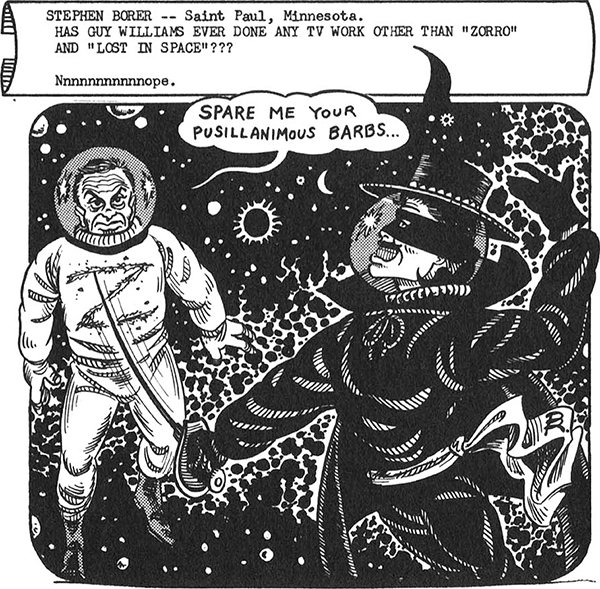But once upon a time, if you had questions about comics, movies, tv, etc.,... you needed a geek. Obviously not a chicken head biting carnival geek - you needed a media geek with great retention and access. We didn't have home video so we couldn't check the tape to see what we wanted to know. Maybe you could catch an episode in summer reruns, or wait until that movie showed up on tv and hope they didn't trim the part you were pondering.
Some of us ancient geezers even resorted to audio taping tv shows so we could revisit bits later. And, for a brief period before home video became a standard, they started selling photo-novels that were simply screen shots from tv episodes or movies with the dialogue in comic style word balloons.
Maybe, if you were really lucky, you had a book that covered some small part of comic or movie history that could answer a few questions. Comic shops did not yet exist, so one had to rely on what you and your friends had stashed in the closet. And this was a time when one could not even be sure that every issue of a title would actually be available at the store where one shopped. Comics spinner racks were not a major concern for shopkeepers, and they most certainly were not concerned with what filled them.
So, us geeks held a special position as keepers and disseminators of lost and hidden lore. Most schools had at least one or two, and sometimes there was even some weird old adult who kept the lore.
Back in the RBCC, they had the Information Center. Actually, Raymond Miller started the Information Center in The Comic Reader back in the early '60s, but it moved with him over to the Rocket's Blast Comic Collector and there it continued on through 1973. (And beyond)
That's where we come in, and we loop back around to yesterday's post.
What all those seemingly random drawings have in common is that Don Rosa drew them as part of his answers when he took over the Information Center with #108 -
Raymond was not an artist, so the column had been purely textual up until this point, sporting only the occasional spot illo from a guest artist (Jim Jones in Ray's final column) or a photo reference. He had tired of the work after providing the service for over a decade and stepped down - so don't be thinking Don rode in and bushwhacked him. Ray stuck around as a consultant for those tricky Golden Age comics questions, as you'll see looking at the headers below.
That nice clean logo up above lasted only one issue. In fact, they all lasted only one issue - a new header for every column, and boy did they get busy...
...eventually came his 'final' column, to make way for his revived Pertwillaby Papers comic...
Yes, it was 1976 - he wasn't just pumping up the column's history.
So... how did all those toons last time fit in? Well, they used to have tails, but i trimmed them to keep them from being distracting. The tails would lead to one of the questions & answers on that page to liven up the presentation - like so:
 |
| (Yes, this one came from the same Ray Miller who used to produce the zine) |
Now, you might think that the answer above was laying a bit of snark down on the questioner, but to be fair - he served it up on himself, too -
And, it probably comes as no big surprise that he managed to sneak in references to the Pertwillaby Papers along the way...
He even provided a clear and compelling answer to a question i've still seen debated in this decade...
Hopefully, that gives you a fair clue on one of the reasons why Don was highly regarded even before the work that came later.
But not the only reasons...
art by Don Rosa from RBCC #s 108-128 (1973-1976)

























No comments:
Post a Comment